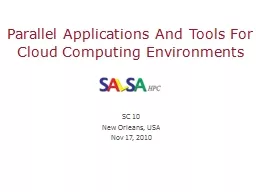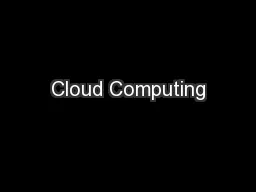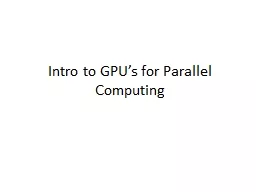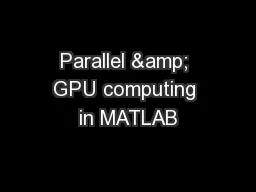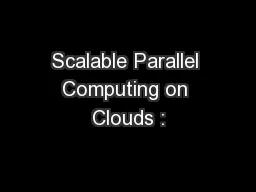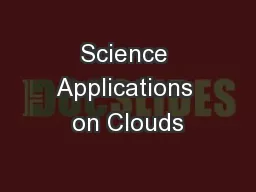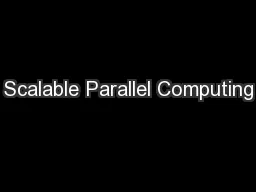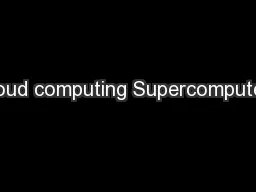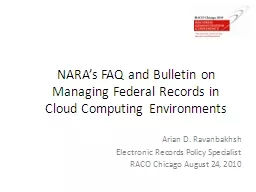PPT-Parallel Applications And Tools For Cloud Computing Environ
Author : danika-pritchard | Published Date : 2017-01-13
SC 10 New Orleans USA Nov 17 2010 Azure MapReduce AzureMapReduce A MapRedue runtime for Microsoft Azure using Azure cloud services Azure Compute Azure BLOB storage
Presentation Embed Code
Download Presentation
Download Presentation The PPT/PDF document "Parallel Applications And Tools For Clou..." is the property of its rightful owner. Permission is granted to download and print the materials on this website for personal, non-commercial use only, and to display it on your personal computer provided you do not modify the materials and that you retain all copyright notices contained in the materials. By downloading content from our website, you accept the terms of this agreement.
Parallel Applications And Tools For Cloud Computing Environ: Transcript
Download Rules Of Document
"Parallel Applications And Tools For Cloud Computing Environ"The content belongs to its owner. You may download and print it for personal use, without modification, and keep all copyright notices. By downloading, you agree to these terms.
Related Documents

